On August 9, 2024, the Ministry of Culture, Sports and Tourism announced the list of national intangible cultural heritages with the traditional craft, pottery making in Sa Huynh, Pho Khanh commune, Duc Pho town, Quang Ngai. This craft village is considered the "successor" of the Long Thanh, Sa Huynh terracotta pottery motifs from 2,000 - 3,000 years ago, which have been recognized as national treasures. Sa Huynh pottery has also had its ups and downs, not unlike Sa Huynh salt making, but thanks to the hands of traditional artisans, the pottery craft has been somewhat revived and is operating more and more systematically.

Sa Huynh ceramic products in Vinh An village, Pho Khanh commune (Duc Pho town, Quang Ngai)
PHOTO: PA
KEEPING THE FIRE FOR THE POTTERY CRAFT
After more than 60 years of living with the traditional pottery profession, up to now, Mrs. Nguyen Thi Ni (86 years old, in Vinh An village, Pho Khanh commune) still has no intention of stopping. Since childhood, Mrs. Ni has been taught the profession by her father, from how to choose soil, knead soil, shape pottery and even how to fire pottery to make it "delicious" when it comes out of the kiln. Now, Mrs. Ni can smell the soil and the fire to know how the pottery is after it comes out of the kiln. For potters in Vinh An village, Mrs. Ni is like the "grandfather" of the profession. In addition to many years of experience, she knows how to grasp the quintessence of the profession, holding the secrets and techniques of making pottery here.
According to Ni, his family's pottery making business has gone through many ups and downs. During the resistance war against the French, his hometown was in the midst of war, but his family still kept the pottery kiln burning every day, then carried the pottery to exchange for rice in Dong Cat (Mo Duc District, Quang Ngai). In the 1980s, Ni's family used a bicycle to transport pottery to sell throughout the province, most of which was at Chau Sa market (Tinh Chau Commune, Quang Ngai City). When they were a little better off, his family bought a lam cart to transport pottery to sell.
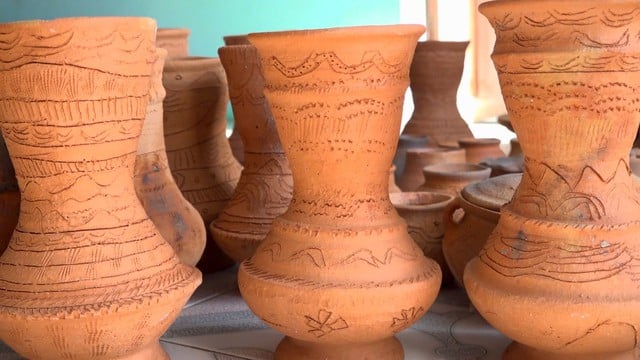
Ceramic products decorated by artisans according to ancient Long Thanh ceramic patterns
PHOTO: PA
After a long period of prosperity, the pottery industry in Sa Huynh also came to a difficult time. In Vinh An and Trung Son pottery villages, there are still about 10 households making a living from pottery. However, Ms. Ni and other artisans are determined to maintain the traditional craft left by their ancestors. Ms. Ni taught the craft to her daughter Mai Thi Hong Tu and her grandson Nguyen Tan Sinh.
"Despite ups and downs, Sa Huynh pottery has been preserved for hundreds of years, is the pride of the people here and cannot be allowed to fade away," said Mr. Ni.
Together with Ms. Ni, Ms. Tran Thi My and many other artisans founded the Sa Huynh Prehistoric Pottery Cooperative with 12 members. In addition to earning a living, they participated to keep the "fire" of the pottery craft from being lost. In October 2023, at the Festival for Preservation and Development of Vietnamese Craft Villages (in Hanoi), these artisans performed pottery making, simulating motifs of prehistoric Sa Huynh culture... attracting the attention of many people.
The pottery village in Pho Khanh commune is completely natural pottery, without using any kind of glaze. To have quality batches of pottery, artisans must know how to "watch the fire" during the entire pottery firing process, which lasts from 14 to 24 hours. The cooperative now mainly operates pottery making experience tourism services, introducing and selling household pottery products and handicraft pottery.
According to Ms. Nguyen Thi Diem Kieu, Director of Sa Huynh Prehistoric Pottery Cooperative, coming to Sa Huynh traditional pottery village and experiencing the ancient and modern pottery making processes, visitors can touch the soul of prehistoric culture and feel a part of the picture of life of the ancient Sa Huynh people.
Mr. Tran Duy Khanh, Chairman of Pho Khanh Commune People's Committee, said that he will invest in infrastructure to develop the pottery profession to serve the development of community tourism.
HEIR OF LONG T HANH CERAMICS
According to the Quang Ngai Provincial Museum, the 1978 excavation at the Long Thanh archaeological site (Pho Thanh Ward, Duc Pho Town) and the 1994 exploratory dig discovered 29 terracotta jars in the jar tombs. Quang Ngai selected the 18 most beautiful and perfect ceramic jars to register and were recognized by the Prime Minister as National Treasures in 2018. Accordingly, these treasures are believed to belong to the early bronze period (early stage), dating back about 3,000 years ago.
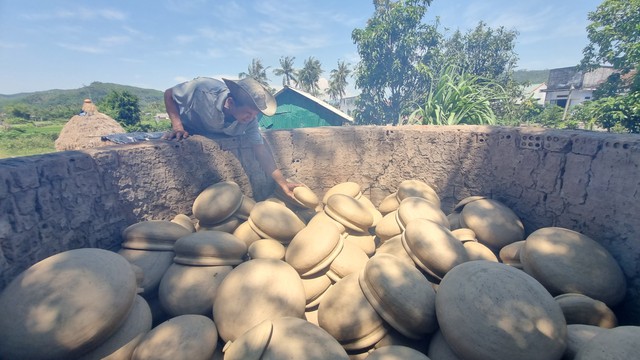
Putting pottery into the kiln
PHOTO: PA
The above ceramic jars were handmade by the ancient Sa Huynh people, combining rolled strips whose main material was carefully filtered clay mixed with fine sand. The ancients created relatively perfect ceramic jars with the following designs: flared mouth, high neck, lathe-shaped body, low base; thin, sturdy ceramic body. The ceramic coat was decorated with patterns: engraved lines, printed shell patterns, embossed ropes, lead-glazed with wavy S-shaped patterns, describing the life of Sa Huynh residents closely linked to the sea.
Nowadays, the pottery making craft in Pho Khanh village (because it is located in the space of the special national relic of Sa Huynh culture, Quang Ngai province named it Sa Huynh pottery craft) cannot create special patterns like Long Thanh ancient pottery. The artisans are only preserving the traditional pottery making techniques of Sa Huynh culture in the stages of preparing the soil, creating the shape with hand-molding techniques combined with slow turning tables, and firing the pottery in a manual kiln with mainly firewood as the main material. The raw materials here are green clay and yellow clay, filtered in excess water to remove trash, stones and dried to make it easier to shape. When the products are released from the kiln (each kiln has about 2,000 - 2,500 products), they are consumed in Chau Sa market (Quang Ngai), Da Nang, Hue, Dong Ha (Quang Tri), Hanoi...
Because Sa Huynh ceramic products are completely natural ceramics, without using glaze, the natural color is like the color of the earth, light, beautiful, durable, and has high usage value. The ceramic line is simple, rustic, imbued with the style of folk art, preserving traditional cultural features, so customers from all provinces and cities in the country love it. Artisans in Sa Huynh ceramic village are currently eager and looking for ways to learn the technique of creating patterns on ancient Sa Huynh ceramic products to create unique features for their products. (continued)
Source: https://thanhnien.vn/cham-tay-vao-linh-hon-gom-co-sa-huynh-185250401231614917.htm



![[Photo] Prime Minister Pham Minh Chinh chairs meeting to discuss tax solutions for Vietnam's import and export goods](https://vstatic.vietnam.vn/vietnam/resource/IMAGE/2025/4/10/19b9ed81ca2940b79fb8a0b9ccef539a)


![[Photo] Phuc Tho mulberry season – Sweet fruit from green agriculture](https://vstatic.vietnam.vn/vietnam/resource/IMAGE/2025/4/10/1710a51d63c84a5a92de1b9b4caaf3e5)



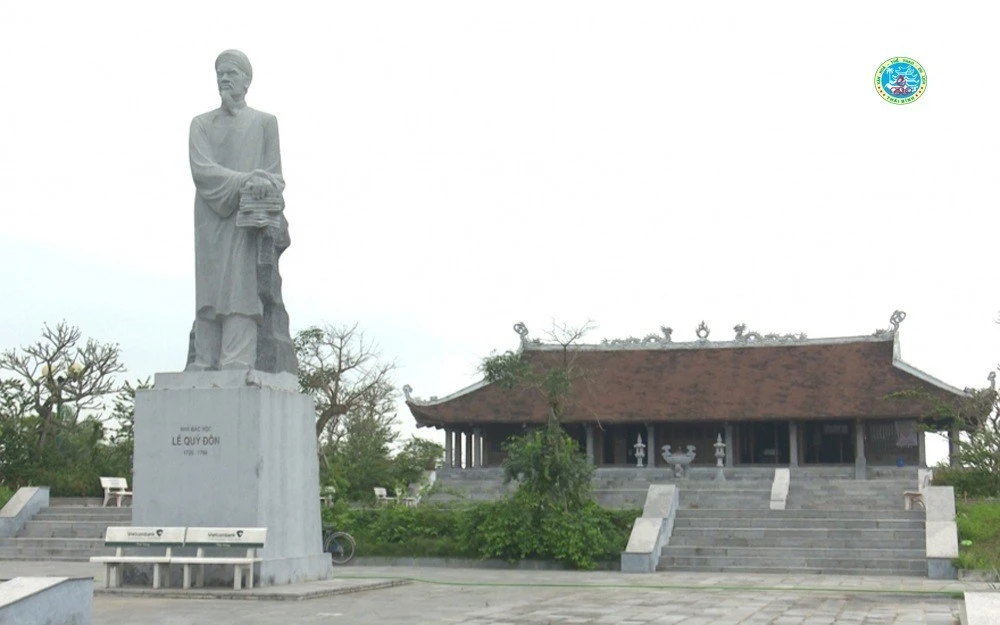

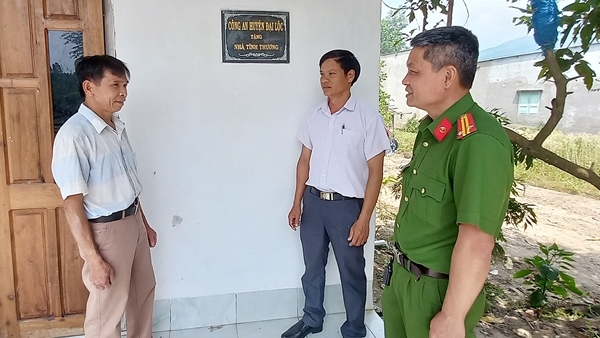











![[Photo] Unique folk games at Chuong Village Festival](https://vstatic.vietnam.vn/vietnam/resource/IMAGE/2025/4/10/cff805a06fdd443b9474c017f98075a4)




















































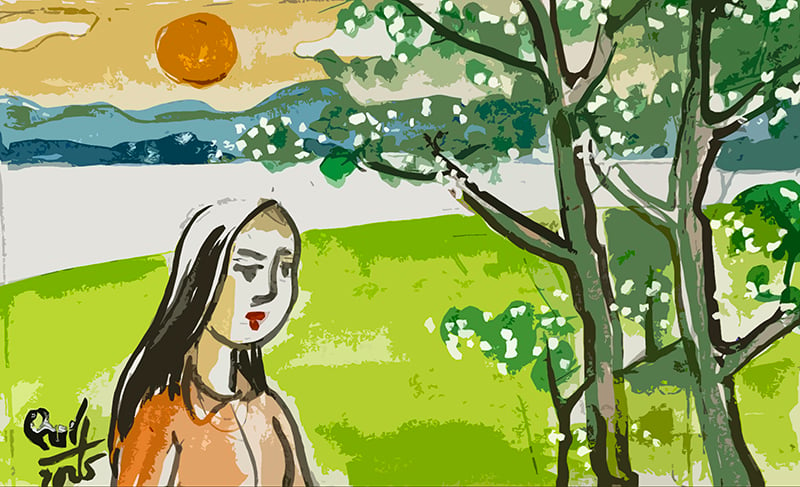
![[Photo] Taking advantage of every sunny hour, asphalting the road through the old forest of Y Ty](https://vstatic.vietnam.vn/vietnam/resource/IMAGE/2025/4/11/c11987f152014781abe6aad9e09fb401)











Comment (0)